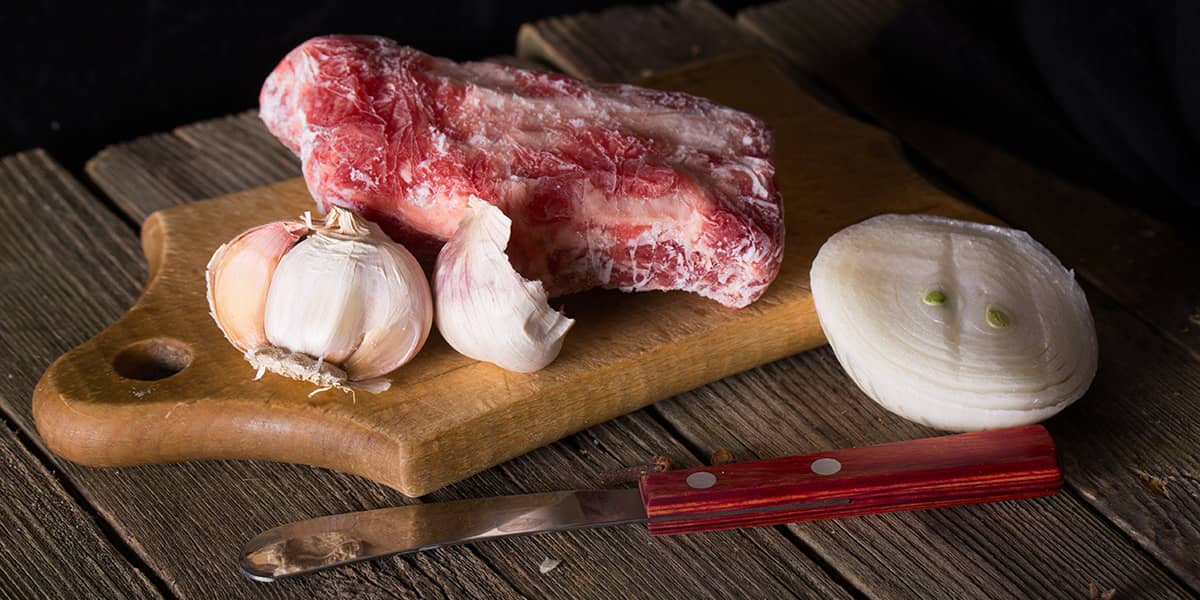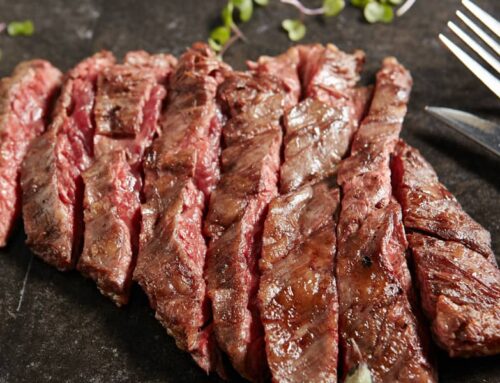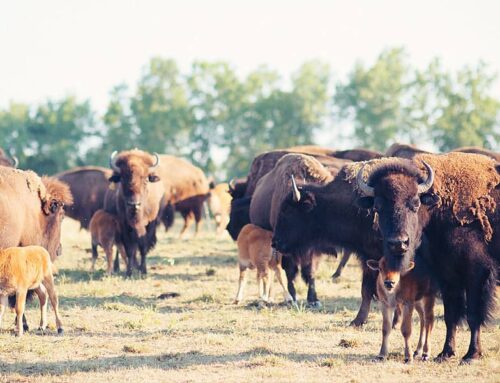Safe Defrosting Methods
As soon as raw or cooked meat, poultry or egg products begin to thaw and become warmer than 40 °F, bacteria that may have been present before freezing can begin to multiply.
Perishable foods should never be thawed on the counter or in hot water and must not be left at room temperature for more than two hours. There are safe ways to thaw food: in the refrigerator, in cold water, and in the microwave.
Refrigerator Thawing
- Planning ahead is the key because a larger pieces of meat may require several days.
- Small amounts of frozen food — such as a pound of ground meat or boneless chicken breasts — require a full day to thaw
- Food will take longer to thaw in a refrigerator set at 35 °F than one set at 40 °F.
- After thawing in the refrigerator, items such as ground meat, stew meat, poultry, should remain safe and good quality for an additional day or two before cooking.
- Red meat cuts (such as roasts, chops and steaks) should remain safe and good quality 3 to 5 days.
- Food thawed in the refrigerator can be refrozen without cooking, although there may be some loss of quality.
Cold Water Thawing
- This method is faster than refrigerator thawing but requires more attention.
- The food must be in a leak-proof package or plastic bag. If the bag leaks, bacteria from the air or surrounding environment could be introduced into the food. Also, the meat tissue may absorb water, resulting in a watery product.
- The bag should be submerged in cold tap water, changing the water every 30 minutes so it continues to thaw.
- Small packages of meat or poultry — about a pound — may thaw in 1 hour or less.
- A 3-to 4-pound package may take 2 to 3 hours.
- Once thawed food must be cooked immediately. Foods thawed by the cold water method should be cooked before refreezing.
Microwave Thawing (not recommended)
- After thawing in the microwave, always cook immediately, whether microwave cooking, by conventional oven, or grilling.
- Holding partially cooked food is not recommended because any bacteria present wouldn’t have been destroyed and, indeed, the food may have reached optimal temperatures for bacteria to grow.
- Foods thawed in the microwave should be cooked before refreezing.
- Also, never thaw foods in a garage, basement, car, dishwasher or plastic garbage bag; out on the kitchen counter, outdoors or on the porch. These methods can leave your foods unsafe to eat.
Cooking Without Thawing
- It is safe to cook foods from the frozen state.
- The cooking will take approximately 50% longer than the recommended time for fully thawed or fresh meat and poultry.
Remember: Even though the center of the package may still be frozen as it thaws on the counter, the outer layer of the food could be in the “Danger Zone,” between 40 and 140 °F — temperatures where bacteria multiply rapidly.
For more information, please visit the USDA Food Safety website.


